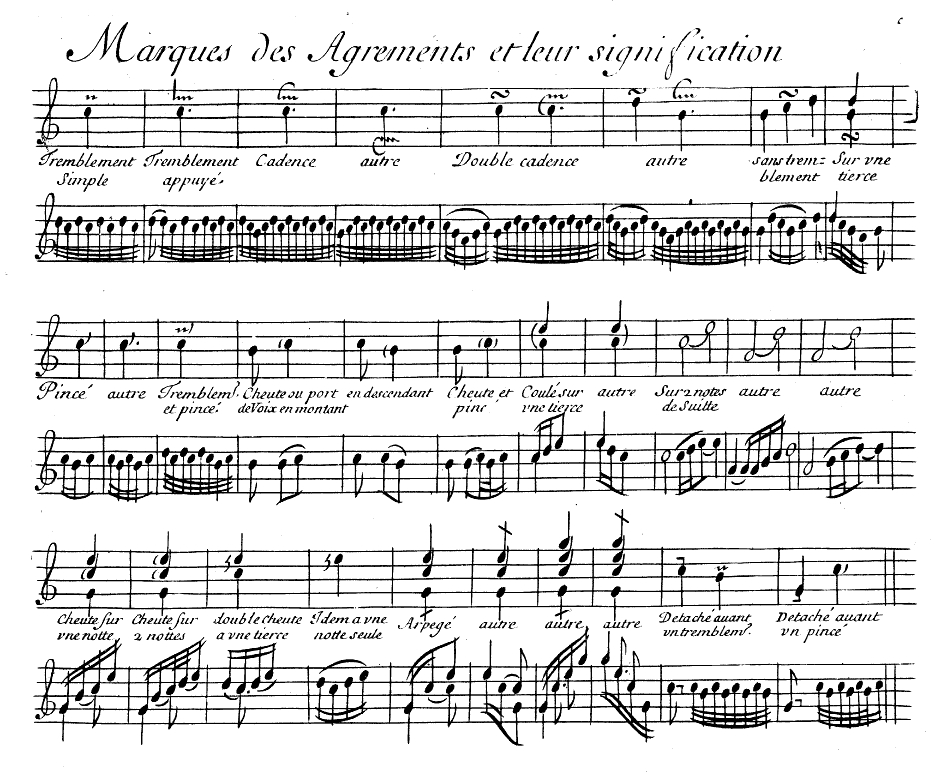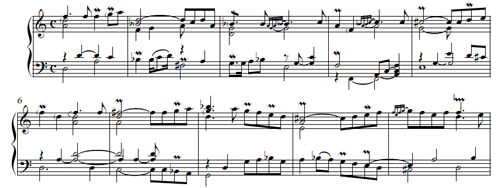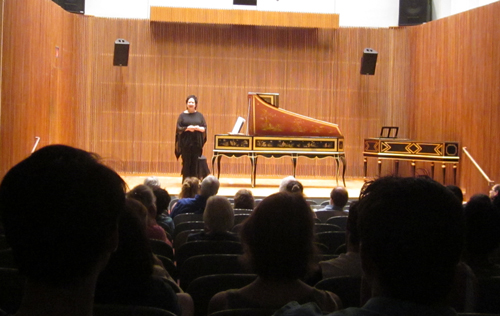by Daniel Hathaway

Broadening the topic to editions of works, she said that the beautiful, digitally engraved score I and most of the class had downloaded from IMSLP — everyone’s favorite online source for free music — presented problems. D’Anglebert’s arrangement challenges the player with a minefield of agrements or ornaments while the original orchestral score calls for almost none, and our copies didn’t convey them accurately. (See D’Anglebert’s table above for his how-to guide, and a snippet from the misleading edition below for some idea of what the performer is up against.)

You’d think — especially if you’re a pianist — that harpsichordists and organists have no control over the beginning of a note or chord. You press a key and a string gets plucked or a valve gets opened no matter what finger force is used, and that’s that. Not so, said Crawford, and not so, said Joe Gascho later in ensemble coaching and the evening continuo class. Slow attacks, fast attacks, and everything in between are possible, and releases should be controlled the same way.
In variations on that subject, Crawford said that every note on the harpsichord had a beginning, a middle and an end, and talked about working with the “bloom” of a harpsichord note using what she called her mushroom analogy (put those fungi in a pan on the fire with some butter and wine, and eventually they’ll absorb the liquid, only to release it a bit later — cooks will understand and take the point).

On Wednesday evening, I looked in on the second rehearsal of the student Baroque Orchestra, when Joe Gascho was drilling the ensemble,which takes all comers from recorders to theorbos in addition to the usual strings and winds — and a trio of harpsichordists. Wednesday was all about tuning, and the conductor took the texture of the music apart in several different ways and at varying tempos to make chords click. Harmony, harmony, harmony, as Meyerson said earlier.
Published on ClevelandClassical.com June 22, 2017.
Click here for a printable copy of this article




